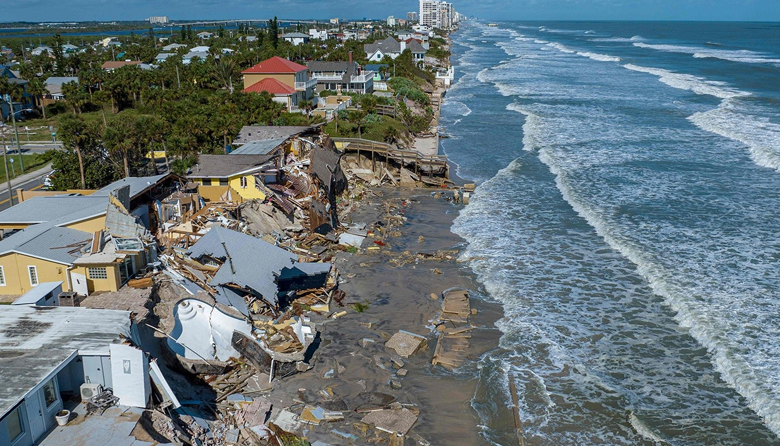
Catastrophe risk modeller RMS has pegged total private market U.S. insured losses from Hurricane Nicole at less than $2 billion, with a best estimate of $1.6 billion.
The estimates from RMS reflect insured wind, storm surge, and inland flooding impacts for the U.S.
RMS sees private market insured losses of between $1.2 billion and $1.8 billion for wind (including coverage leakage) and surge, and inland flood (excluding NFIP) losses of less than $100 million, giving a total excluding the NFIP of between $1.3 billion and $1.9 billion.
RMS estimates losses to the NFIP from storm Nicole to be less than $300 million, and primarily in Florida and Georgia.
Losses reflect property damage and business interruption to residential, commercial, industrial, and automobile lines of business, and consider sources of post-event loss amplification, inflationary trends, and non-modelled sources of loss.
The risk modeller expects the majority of wind and storm surge losses to come from Florida.
The privately insured wind and storm surge loss estimate is based on analysis of ensemble footprints in Version 21 of the RMS North Atlantic Hurricane Models.
The company’s modellers developed and validated the wind, storm surge, and inland flood reconstructions and corresponding loss estimates using publicly available observations, including wind stations, river gauge water level data, and web reconnaissance.
Even though Hurricane Nicole was much less intense than Hurricane Ian a few weeks prior, it exhibited a large wind field that impacted many of the same areas in Florida.
RMS Event Response teams estimate that roughly 98% of postal codes in Florida impacted by Nicole were previously impacted by Hurricane Ian.
Similar to other overlapping events from previous seasons, such as Hurricanes Ida and Nicholas in 2021, and Laura and Delta in 2020, the overlapping nature of Hurricane Ian and Nicole to introduce significant uncertainties in the loss attribution and claims settlement process.
Historically, an event of Hurricane Nicole’s magnitude would not exhibit notable PLA impacts if it were to occur on its own. However, the fact that it closely follows a major event with Hurricane Ian, means that the same factors influencing PLA from Ian also apply to Nicole, including shortages of labor, materials, and claims adjusters. This is an example of compounding PLA effects.
Hurricane Nicole was the 14th named storm of the 2022 North Atlantic hurricane season, the eighth hurricane, and the second hurricane to make U.S. landfall this season after Ian.
The storm made landfall on November 10th, 2022, near Vero Beach, Florida as a Category 1 hurricane with maximum sustained winds of 75 miles per hour (120 km/h).
Nicole brought strong winds, storm surge, and heavy rainfall to coastal and inland areas of the State of Florida, including many that are still recovering from the impacts of Hurricane Ian.
by Yana Keller




